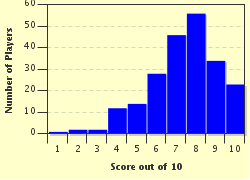Quiz Answer Key and Fun Facts
1. The Virginia opossum is the only example found in the USA of what type of animal, usually associated with Australia?
2. Which alliterative creature is the largest reptile found in North America?
3. There are five species of this animal, three of which are critically endangered. Its name comes from the Greek: 'nose horn'. We call a group of them a crash. What is the animal?
4. In the twentieth century, this colourfully named bird was restricted in the UK to two breeding pairs in rural Wales. A breeding and reintroduction campaign has increased numbers to hundreds of pairs and it has even been seen in London. Which bird is it?
5. The character 'Ratty' in 'The Wind in the Willows' is not really a rat. With the scientific name 'Arvicola amphibius', which species is he?
6. Which unique, poisonous, Australian monotreme (egg-laying mammal) was first thought of as being a hoax?
7. 'Red touch yellow, kill a fellow; red touch black, venom lack' is a mnemonic for a venomous North American snake that sounds like it belongs in the ocean. What's its name?
8. Skomer island in Wales has a breeding population of 120,000 pairs of a bird whose scientific name is 'Puffinus puffinus'. Its English name suggests it comes from a different island that lies between Great Britain and Ireland. What is that name? It's not a puffin!
9. What is the name of the mammal, also known as the sea cow, that lives in the rivers, swamps and coastal areas of Florida?
10. Arenicola marina (or in English, lugworm or sandworm) is an interesting creature which lives in the inter-tidal flat areas of the eastern Atlantic. What is not a fact about them, but a fiction of mine?
Source: Author
Upstart3
This quiz was reviewed by FunTrivia editor
Tizzabelle before going online.
Any errors found in FunTrivia content are routinely corrected through our feedback system.

